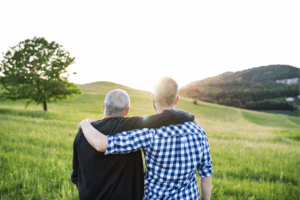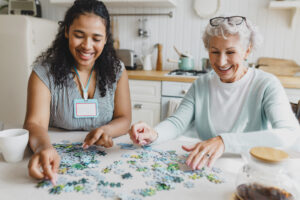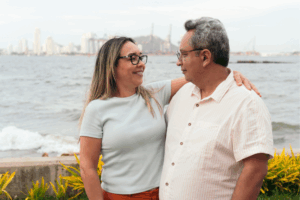The facts surrounding older adults and suicide can come as quite a surprise. For instance, did you know that older adults account for 18% of all suicides? The risk of suicide increases for those aged 75-84 and rises even higher for anyone over 85.
What’s even more unsettling is that these suicides may be under-reported by 40% or more. It is also unknown how many “silent suicides” occur every year, or, suicides that occur due to medication overdose, refusing to eat or drink, or as a result of self-inflicted injuries that present as accidents. Older adults also commonly engage in double suicides, which typically involve their spouses or partners.
The purpose of illustrating these sobering statistics is not to alarm or depress you, but to shed light on the relevance and surprising frequency of elder suicide. If you have a special older adult in your life, it’s best to be aware of the associated risk factors, warning signs, and prevention methods.
Risk factors
Even the most successful, productive, and seemingly content among us are not impervious to elder suicide, as we saw in the untimely passing of Robin Williams in 2014. Common risk factors can include the following:
- Depression
- Problems sleeping
- Firearm possession
- Divorced marital status
- Being a white male (the group with the highest older adult suicide rate)
- Poor health
- Lack of social support
- Negative life changes
Warning signs
In addition to risk factors, the warning signs of suicide are something to watch out for if you’re afraid your loved one may be affected. Physical and cognitive limitations notwithstanding, these signs include:
- Loss of interest in formerly enjoyable hobbies or activities
- Decreased interest in food
- Increased need for sleep, or simply refusing to get out of bed
- Decreased socialization
- Less time spent on self-care (ex., grooming) or doing housework
- Lack of interest in one’s health (not taking medications, following exercise regimens, or complying with diet)
- Putting affairs in order (making or changing a will, giving personal items away, etc.)
- Disregard for personal safety
- Suicidal ideation (constantly thinking or talking about death)
- Actively looking for means to end their life (collecting sedative prescriptions, purchasing bullets for firearms, etc.)
- Express verbalization of the intent to self-harm
Prevention
Unfortunately, older adults do not seek treatment or assistance for mental health or mood issues as often as younger populations do. This means that you – as well as other friends, family members, and caregivers – must be especially vigilant about your loved one’s potential for suicide.
If you do think there’s a chance your loved one might take this drastic step, the first thing to do is contact their physician, psychologist, or psychiatrist – or call 911 if you think they’re in a crisis. Other helpful resources include:
- NIMH (National Institute of Mental Health)
- NAMI (National Alliance on Mental Illness)
- SAVE (Suicide Awareness Voices of Education)
There may be other things you can do to prevent an older adult’s suicide, such as:
- Showing your concern for their happiness and well-being
- Limiting their access to self-destructive items, such as firearms or sedatives
- Letting them know you will help in any way you can
- Encouraging them to follow any medication regimen or therapy protocol suggested by their doctor
- Determining if mental health professionals can visit their home, or if transportation to their offices can be provided
- Hiring a home health aide to monitor and support them
Stamping out elder suicide
While older populations make fewer suicide attempts than younger ones, the former have a higher rate of success in ending their lives. However, just as depression is not an inevitable consequence of growing older, elder suicide is not the inevitable end to one’s life. There are ways to combat these tragedies, and the first step is being aware of what precedes them. By keeping a sharp eye out for your loved one’s health, safety, and mood, you may be able to stop them from making a very permanent mistake.
If you are unsure of how to best help an aging loved one, the trained and compassionate staff at the Institute on Aging is here to help you make that decision and gain the best in at-home care for older adults. Contact us to find out more.







